Melbourne to Hoi An: Distance and the best transportation options
Hoi An, a UNESCO World Heritage Site, is a top favourite among Australian travellers visiting Vietnam. This charming coastal town is famous for its lantern-lit streets, ancient temples, and vibrant local culture. Whether you’re a foodie, history buff, or beach lover, Hoi An has something for everyone. Planning a trip from Melbourne to Hoi An? This guide covers transportation options, visa requirements, and expert tips to help you enjoy a seamless, unforgettable journey!
Introduction to the Melbourne to Hoi An route
Australia is one of Vietnam’s fastest-growing tourism markets. In just the first five months of 2024, Vietnam welcomed 213,000 Australian visitors – a 35% year-on-year increase, making Australia the seventh largest source of international tourists. (Source: Vietnam National Administration of Tourism: Việt Nam – ideal destination for Australian tourists). Many Aussies are drawn to Central Vietnam, especially Da Nang and Hoi An, thanks to their breathtaking scenery, vibrant culture, and idyllic beaches. These destinations are quickly becoming must-visits for Australian travellers seeking both adventure and relaxation in one unforgettable trip.
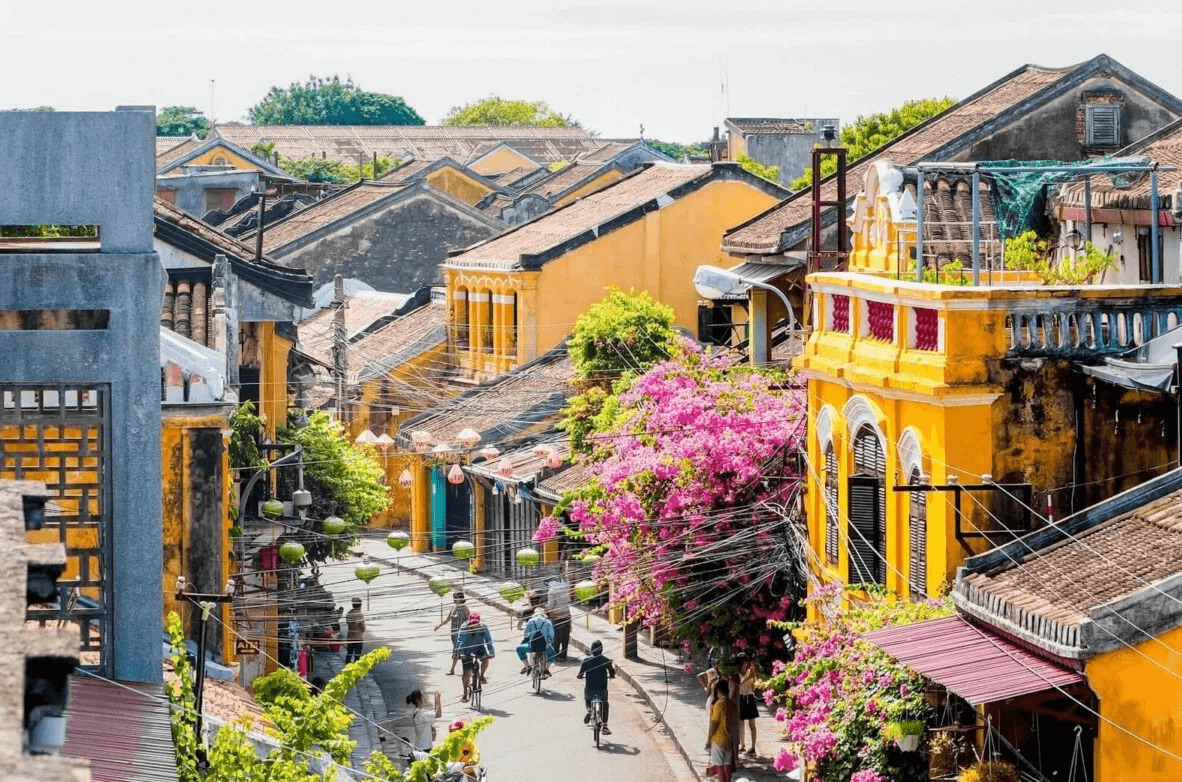
Traveling from Melbourne to Hoi An is so easy. While there are no direct flights, you can reach this charming town via major hubs like Hanoi, Ho Chi Minh City, Singapore, or Kuala Lumpur. The journey is flexible, with plenty of flight and ground transport options to match your budget and travel style. Whether you’re a first-time visitor or a seasoned traveller, this guide will help you plan your trip with ease.
Melbourne and Hoi An are around 7,000 kilometers apart, with total travel time, including flights and layovers, typically ranging from 12 to 20 hours. Despite the distance, Hoi An remains a highly accessible destination for travellers. With affordable flights and a wide range of accommodation options, travellers are sure to find something that perfectly suits their needs and budget.
2 Most popular ways to travel from Melbourne to Hoi An
Getting from Melbourne to Hoi An involves flying into a nearby Vietnamese city or via hubs like Singapore or Kuala Lumpur, then continuing by road. Here are three popular route options to consider.
Take a flight from Melbourne to Hanoi / Ho Chi Minh City, then transfer to Hoi An
As of mid-2025, there are no direct flights from Melbourne to Hoi An or Da Nang (The nearest airport). Most travelers transit through major hubs like Noi Bai International Airport (Hanoi) or Tan Son Nhat International Airport (Ho Chi Minh City), then take a domestic flight to Da Nang. Airlines such as Qantas, Vietnam Airlines, and Bamboo Airways offer direct flights from Melbourne to Hanoi or Ho Chi Minh City, with flight times around 8-9 hours and one-way fares starting from approximately AUD 300.

From either city, domestic flights to Da Nang take about 1.5 hours and typically cost between AUD 50 and 100. After you arrive in Da Nang, reaching Hoi An is easy with several ground transport options available like taxis, shuttle buses, and private transfers are all convenient and widely used.
If you’d rather not fly domestically, travelers from Hanoi can opt for an overnight train or long-distance bus to Da Nang. However, this journey takes 16-20 hours and is generally less favored by international visitors due to the long travel time. While it’s less popular among international tourists due to the duration, it can offer a more immersive and scenic experience, especially by train. Also, train tickets typically cost around VND 500,000-900,000 (~AUD 30-55) depending on seat type and class, which is cheaper than a domestic flight.
Flying from Melbourne via Singapore or Kuala Lumpur
For budget-conscious travelers, routing through major transit hubs like Singapore (Changi Airport, SIN) or Kuala Lumpur (Kuala Lumpur International Airport, KUL) can significantly cut down on flight costs. Low-cost carriers such as Scoot and AirAsia operate flights from Melbourne to these cities, with one-way fares starting from AUD 200 to 300. From there, you can easily connect to Da Nang, Hanoi, or Ho Chi Minh City via regional carriers like VietJet Air or Malaysia Airlines-often at very affordable rates.
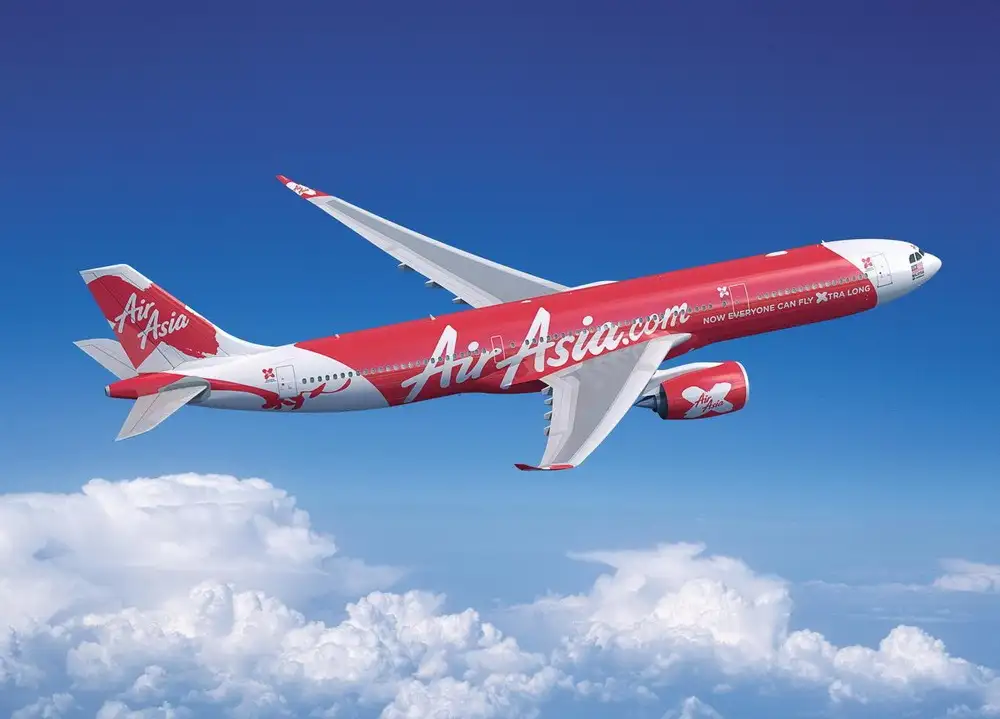
Depending on the layover duration, total travel time typically ranges from 14 to 20 hours. While longer layovers can extend the journey and budget airlines often have stricter baggage policies, this route is often the more affordable and provides greater flexibility in flight schedules. As a bonus, layovers in vibrant cities like Singapore or Kuala Lumpur offer the chance for a quick urban adventure before continuing on. Once in Da Nang, reaching Hoi An is convenient with a taxi, shuttle bus, or private transfer, as previously mentioned.
Read more: 22+ Best places to eat in Hoi An you shouldn’t miss
The ultimate guide to traveling from Melbourne to Hoi An
To ensure a smooth trip from Melbourne to Hoi An, here are some practical tips to keep in mind.
3 Visa options for Australian citizens traveling to Vietnam
Australian citizens need a visa to enter Vietnam. Here are the three main options:
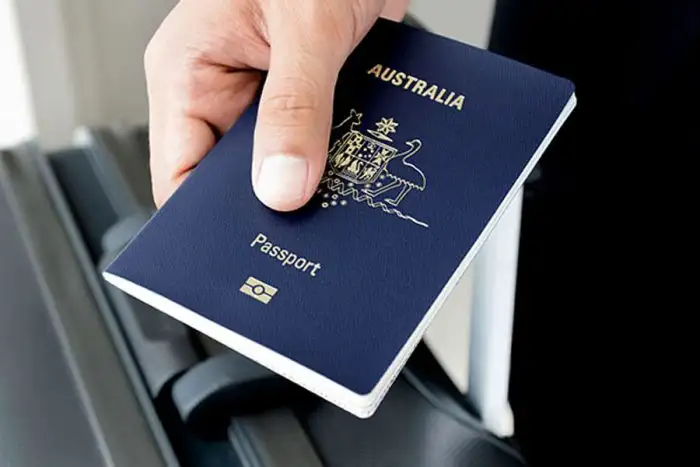
- E-visa (Electronic visa):
The easiest and most convenient way for travelers to enter Vietnam is by applying for an E-Visa (Electronic Visa) online through the official government portal at evisa.xuatnhapcanh.gov.vn. The application process is straightforward and takes around 3 to 5 business days to process. Once approved, the e-visa is valid for 30 days and allows for a single entry into Vietnam.
The cost is USD 25, which is approximately AUD 37. This option is ideal for most short-term visitors, as it eliminates the need to visit an embassy or consulate. However, the e-visa is limited to 30 days and cannot be used for multiple entries, making it less suitable for those planning longer stays or multiple visits during their trip.
- Visa on arrival (VOA):
Another way to enter Vietnam is by obtaining a Visa on arrival (VOA), which requires a pre-approval letter from an online travel agency before departure. Once you arrive at one of Vietnam’s international airports-such as Da Nang, Hanoi, or Ho Chi Minh City-you’ll present the letter along with a passport-sized photo and pay a cash stamping fee in USD to receive your visa.
The cost ranges from USD 25 to 50 (approximately AUD 37 to 75), depending on whether you choose a single-entry or multiple-entry visa. The VOA is a flexible option, especially for travelers planning to stay in Vietnam for up to 3 months or make multiple entries. However, it does involve some additional steps, including pre-approval paperwork and potentially time-consuming visa processing upon arrival at the airport.
- Embassy/Consulate Visa:
For travelers who prefer a traditional method or have long-term or more complex travel plans, applying for a visa through the Vietnamese Embassy in Canberra or the Consulates in Sydney or Melbourne is a reliable option. To apply, you’ll need to submit your passport, a completed application form, and the applicable fees either in person or by mail. Processing typically takes 5 to 7 business days.
This method is ideal for those needing a visa valid for longer stays or multiple entries. However, it can be less convenient compared to online options, as it requires physical paperwork and possibly visiting the embassy or consulate. Visa costs vary depending on the type, generally ranging from AUD 50 to 100.
Tip: Always check visa requirements well in advance, as processing times and rules may change. Ensure your passport is valid for at least six months from your entry date.
How to get around Hoi An?
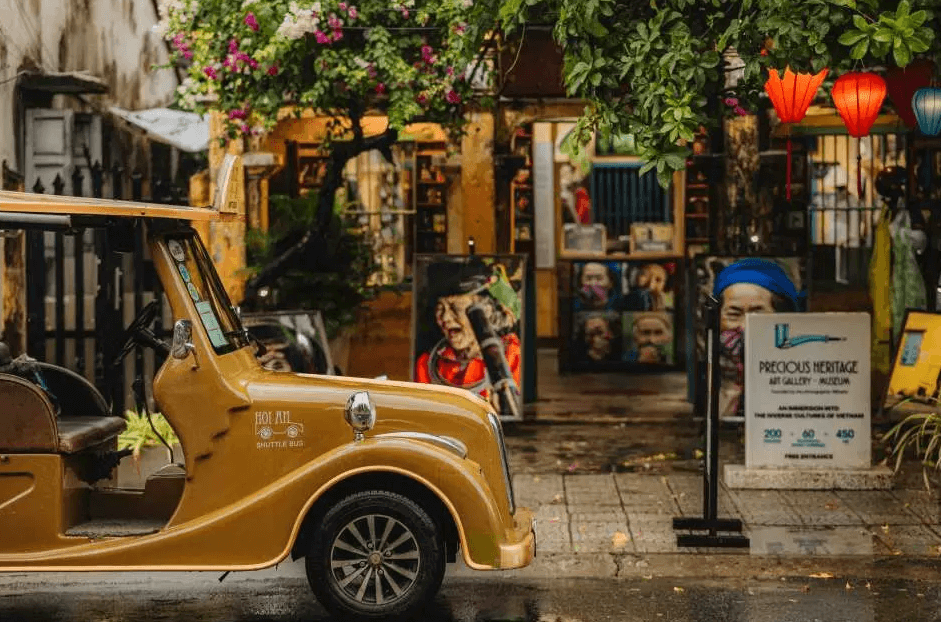
Hoi An is compact and easy to navigate, with several transport options:
- Walking: The Ancient Town is pedestrian-friendly, with most attractions within 1-2 km. Walking is the best way to soak in the charming streets, riverside cafés, and heritage sites.
- Bicycle: Many hotels and hostels offer free or low-cost bike rentals (VND 20,000-50,000/day, ~AUD 1-3). Cycling is perfect for short scenic rides to An Bang or Cua Dai Beach.
- Shuttle bus: Getting around Hoi An by shuttle bus is a convenient and affordable option. Many accommodations offer free shuttle services, while others charge a small fee of around VND 30,000–50,000 (~AUD 1.5–2.5) per ride, making it easy to explore without needing a taxi or motorbike.
- Motorbike: For more flexibility, rent a motorbike for VND 100,000-150,000/day (~AUD 6-9). It’s a great option for visiting spots like the Marble Mountains or My Son Sanctuary. Just make sure you have a valid license and always wear a helmet.
- Taxis and Grab: Need a quick and convenient ride? Taxis and Grab (Vietnam’s version of Uber) are reliable for getting around town or heading to the airport. Short trips within Hoi An usually cost VND 50,000-100,000 (~AUD 3-6).
- Cyclo: For a more local experience, hop on a cyclo (three-wheeled rickshaw) and enjoy a slow-paced tour of the Ancient Town. Expect to pay around VND 150,000-200,000/hour (~AUD 9-12).
Note: In the evenings, especially during Lantern Festivals and night markets, Hoi An’s Ancient Town becomes a pedestrian-only zone, where motorbikes and cars are not allowed. Plan to walk or cycle to fully enjoy the magical, traffic-free atmosphere.
Read more: What to see in Hoi An: A guide to unmissable attractions
Where to stay in Hoi An?

Hoi An offers a wide range of accommodations to suit every travel budget and style.
- Budget stays: Budget travelers will find plenty of hostels offering dorm beds for just AUD 10-15 per night. These Hoi An accommodations are great for solo backpackers or anyone looking to meet fellow travelers. Most come with free Wi-Fi, shared kitchens, and friendly common areas.
- Affordable guesthouses & Basic hotels: For a bit more privacy, guesthouses and basic hotels offer private rooms starting from AUD 20-30 per night. These are perfect for couples or small groups seeking comfort without breaking the bank. Many are family-run, offering a warm, local touch.
- Mid-range boutique hotels: If you’re after a bit of style and comfort, mid-range boutique hotels are a great option, typically priced between AUD 50 and 100 per night. Expect charming decor, quality service, and amenities like swimming pools or garden courtyards. These stays are ideal for couples, families, or digital nomads.
- Luxury resorts: High-end resorts in Hoi An provide a 5-star experience, with prices ranging from AUD 200 to 500 per night. Many are set along the river or near the beach, offering spa services, fine dining, and private villas. This choice is perfect for honeymooners or anyone looking to splurge in style.
- Homestays (Local experience): For a more authentic Vietnamese experience, consider staying in a local homestay, typically priced at AUD 20-40 per night. You’ll enjoy cozy accommodations, warm hospitality, and often home-cooked meals. It’s a wonderful way to connect with Hoi An’s culture and community.
Note: For convenience, consider staying near the Ancient Town to be close to major attractions, or opt for beachfront accommodations if you prefer a more laid-back atmosphere.
Interestingly, Bliss Hoi An Beach Resort & Wellness perfectly meets all the needs mentioned above. Tucked away on the tranquil shores of Binh Minh Beach, this serene retreat offers spacious rooms with breathtaking ocean views, a relaxing spa, and an infinity pool that appears to flow straight into the sea. With its convenient location and complimentary shuttle service to Hoi An Ancient Town, guests can easily immerse themselves in the city’s rich culture while enjoying a peaceful coastal escape.
Contact us through + 84 235 3874 888 for more details and best deal!
Additional travel tips foreign tourists from Melbourne to Hoi An
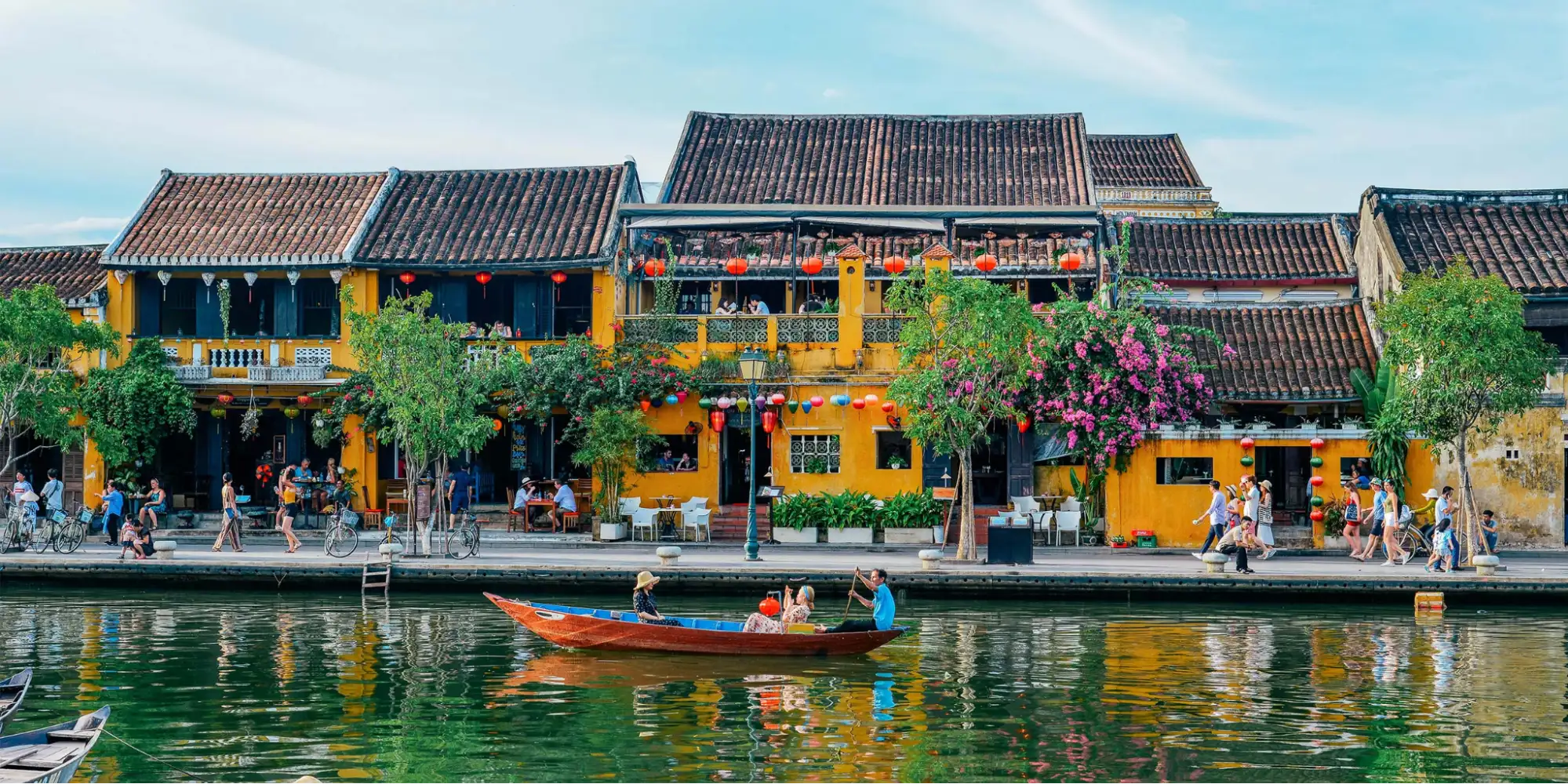
- SIM cards: Stay connected by purchasing a local SIM card at Da Nang Airport or in Hoi An. Reliable providers like Viettel and Mobifone offer data plans with 1-2 GB per day for around VND 150,000 (~AUD 9), valid for 30 days. Wi-Fi is also widely available in cafes, hotels, and restaurants.
- Currency exchange: The local currency is the Vietnamese Dong (VND). For the best exchange rates, change AUD at banks or authorized currency exchange counters in Da Nang or Hoi An. ATMs are easy to find, but it’s wise to carry cash for markets and smaller shops. (As of 2025, AUD 1 ≈ VND 16,500).
- Best time to visit Hoi An: Hoi An is most enjoyable between February and April, when temperatures are mild (20-28°C) and rainfall is low. Avoid visiting from September to November, as heavy rains can lead to flooding. Don’t miss the Full Moon Lantern Festival, held monthly, when the Ancient Town glows with thousands of lanterns.
- Choosing the right transport: For convenience, fly into Hanoi or Ho Chi Minh City and take a domestic flight to Da Nang. Budget-conscious travelers from Melbourne to Hoi An can save money by transiting through Singapore or Kuala Lumpur with low-cost carriers.
Traveling from Melbourne to Hoi An is a rewarding journey that combines modern travel convenience with the charm of a historic destination. With smart planning around visas, flights, and accommodation, your journey can be as smooth as it is unforgettable. So pack your bags, chart your course, and get ready to experience the magic of one of Vietnam’s most captivating destinations!








